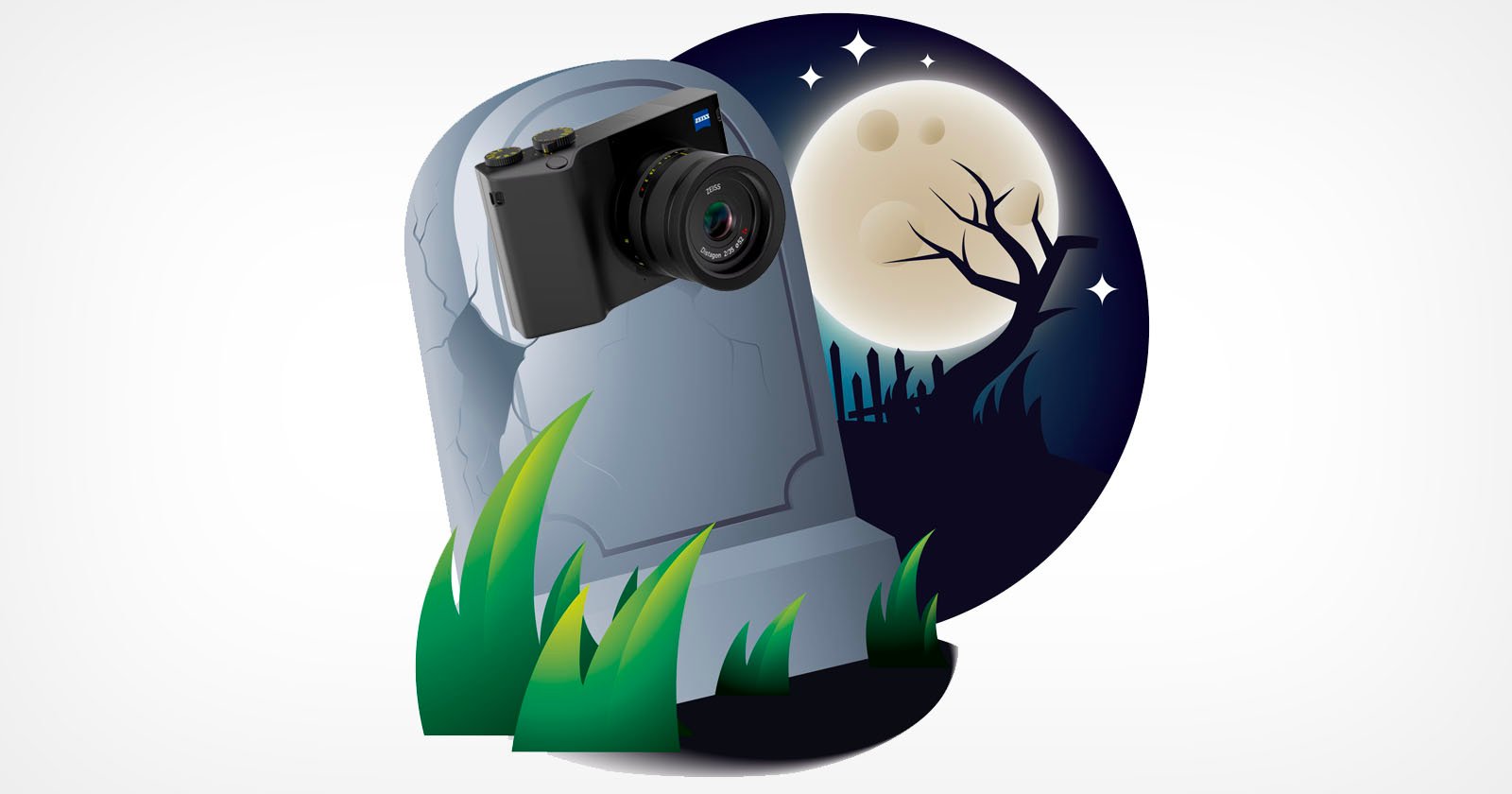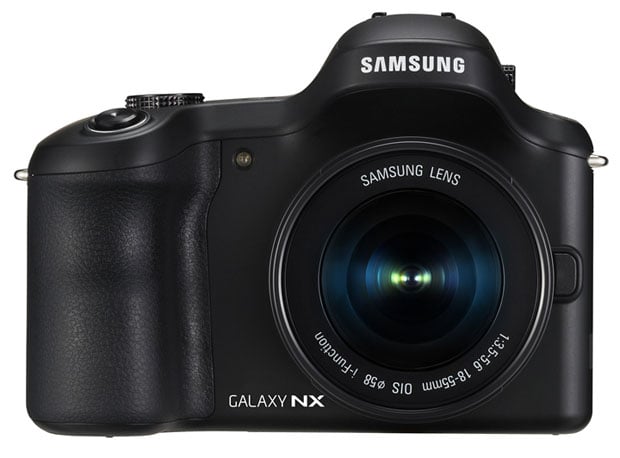
![]()
The Zeiss ZX1 promised “intuitive” photography that mixed a standalone camera with smartphone software. But now that it’s marked as discontinued, is this finally the end of the Android camera?
The Zeiss ZX1 was designed purposefully as a concept piece from a top-shelf manufacturer that would clearly spell out the future direction for the industry. To understand where Zeiss was coming from is to understand the position that the industry had increasingly found itself in as a result of the success of the smartphone.
The smartphone was able to leverage several key elements that successfully pitted it against the compact camera of the early 2000s. Firstly, it was a multi-function device (no need for a phone, MP3 player, or a camera) which reduced, size, weight, and cost. Secondly, it incorporated internet access which facilitated photo sharing. This was a critical element because it drew strongly upon our social competitiveness and there is nothing more powerful than a photo to show where I am, who I’m with, and what I’m doing. Gone were the days of finishing a film and sending it off to a lab, or hooking a CF card up to a PC.
![]()
The biggest drawback was — of course — the paltry image quality of smartphone cameras; at best they could hide their deficiencies, at worst lay them bare. You used a “proper” camera for “proper” photos. It was actually a third element that has been a game changer for smartphones and that is computational photography. It’s worth stating that computational photography was already a “thing” by dint of the fact that Adobe’s Photoshop had long been used by photographers for post-production.
Where it mattered was real-time computational processing and it’s likely that ProHDR (for the iPhone 3) was one of apps to achieve this. Now you could get in-phone HDR images, but that was just the start. What manufacturers knew was that smartphones wouldn’t be used to produce A3 wall prints, but rather low-resolution social media posts that had to look good on a small screen. Multi-shot mode could produce HDR, remove noise, shoot at night, stitch panoramas, or simulate bokeh, particularly at low resolutions where image alignment wasn’t an issue.
What the leading smartphones did was push into territory that required specialist camera equipment and processing and so begged the following question: why weren’t mainstream camera manufacturers already in this space?
Digital Camera Processing
The short answer is that they were, but in a limited way. For example, Nikon uses Active D-Lighting (contrast optimization), Fujifilm has an in-camera RAW processor, and Sony can generate panoramas. The problem didn’t lie with the camera’s capabilities, the manufacturer’s technical competence, or the algorithms themselves, but rather with the platform that they inhabited: the camera firmware.
Your camera’s software is a hostage to fortune of its past incarnations that have their roots in the 1980s and 1990s. When I picked up a second-hand film Nikon F100, it felt exactly like a DSLR without the LCD screen as all the electronic components behaved in exactly the same way — which is what you would expect when they have the same core firmware. The cameras of today have their roots in the firmware of the past.
This is understandable because manufacturers have to write the control system software for their fly-by-wire systems, which were subsequently modified in a digital world to handle the capture and storage of image data. As camera iterations progressed, so the richness, functionality, and complexity of these software systems increased. However, they remain proprietary and locked down, meaning that you get what the manufacturer wants you to have. In contrast, smartphones are general computing platforms, meaning anyone can write software utilizing interfaces to existing hardware which of course gave birth to photography apps and their post-production workflows.
If we were to be critical of camera manufacturers, then it would be that software has never been a top priority for them. Nikon has historically been poor at releasing firmware updates, taking (many) iterations to introduce features where it lagged behind others, although its approach with the Z-system has been refreshingly forthcoming. Fujifilm — on the other hand — has a reputation for regular updates to fix bugs and introduce new features. And it’s what users expect in an era of regular app updates on smartphones.
SmartCameras
Given all of the above, it’s not surprising that manufacturers began to experiment with incorporating Android control systems into their devices and the first to launch was probably the Nikon Coolpix S800c released in 2012.
The compact camera form factor — clearly an experiment designed to appeal to the masses — sported Android 2.3 (Gingerbread for those with good memories) and incorporated a Type 1/2.3 sensor and a 3.5-inch screen. Its implementation of Android ran email, browser, and social media apps amongst others, however it failed to set the camera world alight probably because it offered neither a good camera, nor a good smart device. In short, it wasn’t the solution that consumers were after.

This is in contrast to Samsung’s offerings which were more committed to the idea of a “smart camera.” The Samsung Galaxy Camera (and Galaxy Camera 2) and Galaxy S4 Zoom were a camera with smartphone elements and a smartphone with camera elements. However, it was the Samsung Galaxy Camera NX that delivered (in 2013) on this promise to prosumers and was really rather good (although had a then hefty $1,600 price). A genuine mirrorless model that used Android 4.2.2 (Jelly Bean) and featured a 20 megapixel APS-C sensor, it allowed you to organize, edit, and share your images. It was discontinued in 2017.
The Zeiss ZX1 Lesson
Into the fray came Zeiss’ 2018 announcement of the ZX1, which we must assume was already in development prior to Samsung’s withdrawal from the market. Zeiss decided to go “full bore” and outsmart Samsung’s smartcamera with a full-frame model, 37 megapixel, fixed lens design, manufactured to the highest standards. However, it set a vaporware marker in the sand for the length of time between announcement and delivery, reaching market at the end of 2020, although not readily available until 2021.
A short two years later — perhaps not helped by COVID — the ZX1 has bitten the dust with Zeiss having a hard lesson in the economics of camera development, perhaps also hampered by the $6,000 list price. One suspects there will not be a ZX2.
Given that very few companies have seriously entered the Android camera market, what are the key takeaways that Zeiss — and the market as a whole — can learn?
Firstly, match your product to your consumer. Will the sort of person that buys a $6,000 full frame, fixed lens, camera want it to be an Android smartdevice or will they prefer a stripped back, bare metal, analog dial-laden, throwback to the 1960s that incorporates a high res sensor and the best optics? Leica clearly knows its market.
Secondly, plan the lifespan of your device carefully. Most consumers will expect it to last longer than their smartphone and won’t tolerate operating systems or apps stopping working simply because they are a few years old which probably means you need to own your platform.
Thirdly, connecting anything to the internet is risky so addressing security is critical. Fourthly, your value proposition for a smartcamera must be strong, which means getting the ergonomics and deliverables right, something smartphone manufacturers have nailed.
Early iterations of the smartcamera didn’t use Android as a computational platform, but a social media platform which isn’t necessarily leveraging the smartcamera’s greatest strengths. In short, the ZX1 failed because of a mismatch between consumer and brand, the implementation, and its unfathomable cost.
What the camera industry actually needs is the bravery to approach redesigning camera firmware from the ground up, integrating a touch screen effectively, and making image sharing slick, all within a platform that opens up image processing on-camera to third-party algorithms.
If manufacturers (looking at Sony, Nikon, and Canon) could agree on an open standard for plugin design then everyone would win. Unfortunately, in the rush to bring out their new mirrorless systems, Nikon and Canon have (understandably) taken their existing firmware and built upon it. This is simply not good enough; we are at a crossroads in imaging technology and manufacturers need to address the significant deficiencies inherent in how the industry appeals to consumers in order to roll back the increasing irrelevance to mainstream society.
Zeiss at least had the courage to design something from scratch, however, its approach was flawed and ultimately failed. Maybe it’s time for manufacturers to work together?
Image credits: Header photo licensed via Depositphotos.






